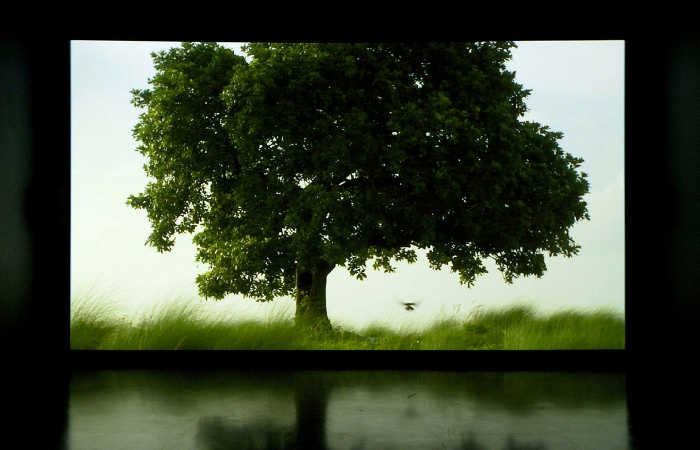Press Release
If a crime continues to occur regardless of the enormous evidence available, then is the crime invisible or the evidence invisible or are both visible but not seen? –Amar Kanwar
The Sovereign Forest initiates a creative response to our understanding of crime, politics, human rights and ecology. The validity of poetry as evidence in a trial, the discourse on seeing, on compassion, justice and the determination of the self, all come together as a constellation of films, texts, books, photographs, objects, seeds and processes.

Amar Kanwar, The Sovereign Forest
Bildmuseet, Umeå (Sweden)
20.10.2017 - 11.03.2018

Exhibition October 20, 2017 -

© ArtCatalyse International / Marika Prévosto 2017. All Rights Reserved
Recognised for his filmic works, and installations that interrogate the politics of power, violence and justice, The Sovereign Forest is a long-
The forcible displacement of indigenous (tribal) communities and peasants has been a brutal cycle of life in Odisha since the 1950s. In the past fifteen years, several mountain ranges, wildernesses, and agricultural lands were sold or leased to mining cartels and other corporations for commercial use. A new economic regime allowed for the formal removal of legal and bureaucratic restrictions. The process of land acquisition became easier, and exacerbated the corrupt practices indulged in by political parties, government departments and the judiciary. A series of local resistances by peasants, fisher-
Situated within The Sovereign Forest is The Scene of Crime (2011), an experience of a landscape just prior to erasure. Almost every image in this film lies within specific territories that are proposed industrial sites and are in the process of being acquired by government and corporations in Odisha. The Counting Sisters and Other Stories (2011), The Prediction (1991–2012) and The Constitution (2012) are three large handmade books each with their own films projected on its pages. Containing stories written by Kanwar and pieces of "evidence" such as a fishing net, a cloth garment, rice seeds, a betel leaf, and newspaper embedded inside the paper, visitors are encouraged to turn the pages and read these stories.
The Sovereign Forest captures the magnitude of scams and hardship of the affected population and asks critical questions: how to understand crime and the conflict around us? Who defines evidence? Is an illusion more real than a fact? Can "poetry" be used as "evidence" in trial? How do we see, know, understand, and remember disappearances? How to look again?
The Sovereign Forest is produced with the support of Samadrusti, Odisha, India; Thyssen-
Artist and filmmaker Amar Kanwar (b. 1964) was born and works in New Delhi, India. His works have been presented at a number of international film festivals, art biennials and museums all over the world. Among others, this year was his fourth consecutive participation at documenta in Kassel, Germany.
Amar Kanwar, The Scene of Crime (installation view from The Sovereign Forest). Courtesy of the artist and Marian Goodman Gallery. Photo: Henrik Stromberg.
